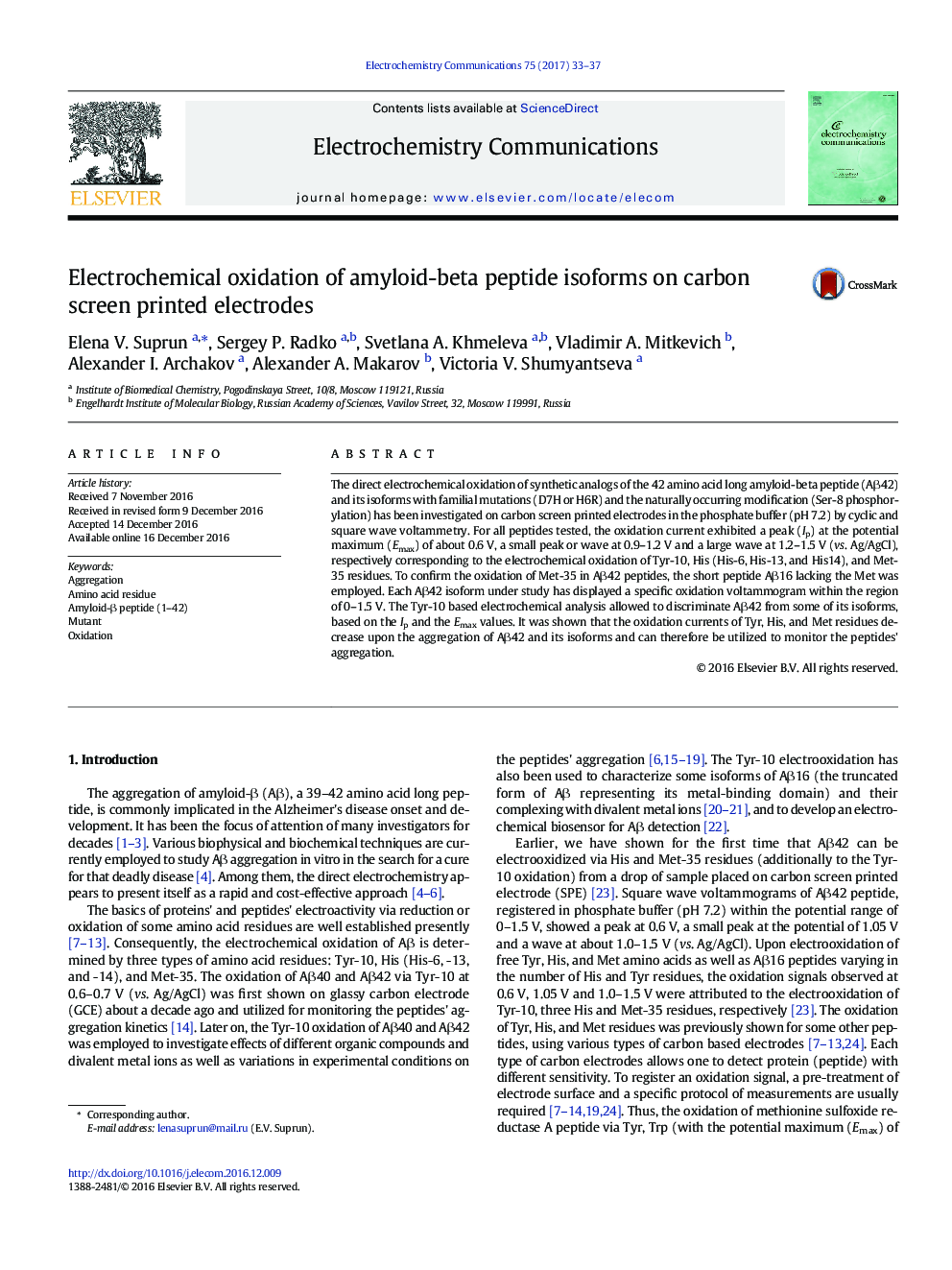| Article ID | Journal | Published Year | Pages | File Type |
|---|---|---|---|---|
| 6469718 | Electrochemistry Communications | 2017 | 5 Pages |
â¢Aβ42 is oxidized via Tyr, His, and Met residues at carbon SPE.â¢Aβ42 Met-35 residue oxidation produces a broad wave at about 1.2-1.5 V (vs. Ag/AgCl).â¢Ser-8 phosphorylation affects the Aβ42 signal at about 1.2-1.5 V (vs. Ag/AgCl).â¢Oxidation is sensitive to amino acid substitutions in the Aβ42 peptide, such as D7H.â¢Upon the aggregation of Aβ42 and its isoforms, the Tyr, His, and Met oxidation signals decrease.
The direct electrochemical oxidation of synthetic analogs of the 42 amino acid long amyloid-beta peptide (Aβ42) and its isoforms with familial mutations (D7H or H6R) and the naturally occurring modification (Ser-8 phosphorylation) has been investigated on carbon screen printed electrodes in the phosphate buffer (pH 7.2) by cyclic and square wave voltammetry. For all peptides tested, the oxidation current exhibited a peak (Ip) at the potential maximum (Emax) of about 0.6 V, a small peak or wave at 0.9-1.2 V and a large wave at 1.2-1.5 V (vs. Ag/AgCl), respectively corresponding to the electrochemical oxidation of Tyr-10, His (His-6, His-13, and His14), and Met-35 residues. To confirm the oxidation of Met-35 in Aβ42 peptides, the short peptide Aβ16 lacking the Met was employed. Each Aβ42 isoform under study has displayed a specific oxidation voltammogram within the region of 0-1.5 V. The Tyr-10 based electrochemical analysis allowed to discriminate Aβ42 from some of its isoforms, based on the Ip and the Emax values. It was shown that the oxidation currents of Tyr, His, and Met residues decrease upon the aggregation of Aβ42 and its isoforms and can therefore be utilized to monitor the peptides' aggregation.
Graphical abstractDownload high-res image (127KB)Download full-size image
